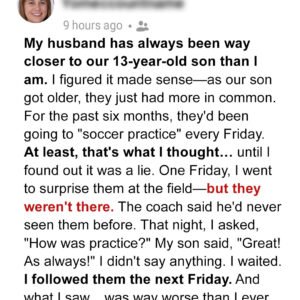A viral photo capturing a plus-sized airline passenger visibly struggling to fit into a standard economy seat has reignited a nationwide debate around airline seat policies and accessibility. The image, taken during a 2023 flight from Helsinki to Copenhagen, was initially shared by consumer rights advocate Christopher Elliott and later amplified by the Miami-based hip-hop group Pretty Ricky. The post has gone on to spark outrage, support, and serious questions about fairness in modern air travel.
As airlines continue to shrink seat dimensions to increase capacity and profitability, many travelers—especially those who are plus-sized—are finding air travel increasingly difficult, if not outright humiliating. The controversy surrounding this viral photo is now pushing both the public and policymakers to confront a long-ignored problem in the airline industry: seating equality.
The Photo That Sparked the Firestorm
The now-viral image shows a visibly overweight passenger attempting to sit in a standard aisle seat with obvious discomfort. According to Elliott, the passenger was simply trying to travel like anyone else—but the situation highlighted the limitations and inflexibility of airline seating design. Once Pretty Ricky shared the photo on Facebook, it reached a massive audience and attracted over 1,600 comments, creating a digital firestorm.
“This picture shows how tough air travel can be for people who don’t fit in a single seat,” the post read. “Airlines need to come up with a fair solution—for the passenger and the people sitting beside them.”
Divided Public Reaction: Who’s Responsible?
The internet responded swiftly—and divisively. Some commenters were blunt, arguing that plus-sized passengers should be required to purchase an additional seat if they cannot comfortably fit in one. “If you’re taking up more than one seat, you should pay for more than one,” one user wrote. Another pointed out, “Tall passengers have to pay for extra legroom, so why should seat width be treated differently?”
Others took it even further, suggesting passengers be weighed before boarding, similar to baggage policies. “We weigh our luggage—why not people?” one person commented, while another called the idea “inhumane” and “degrading.”
But not all responses were critical. Many commenters pushed back, pointing out that this issue is about much more than body size—it’s about how airline seating has been shrinking over time, reducing comfort for all passengers, not just plus-sized individuals.
Are Airline Seats Too Small?
Industry observers and consumer advocates have long criticized airlines for reducing seat width and legroom in order to maximize profits. The average seat pitch—meaning the distance between a point on one seat and the same point on the seat in front—has shrunk significantly over the past two decades. Seat widths have also become narrower, leaving little room for movement or comfort.
“People of all sizes are being squeezed,” one commenter noted. “It’s not just about obesity—it’s about corporations prioritizing dollars over dignity.”
Others highlighted factors contributing to weight gain that are often overlooked in the discussion, such as economic disparities, health conditions, or medication side effects. “Not everyone has access to healthy food or a gym,” one user pointed out. “It’s not always about personal choices—sometimes it’s about the resources you do or don’t have.”
The Voice of the Movement: Jaelynn Chaney
Enter Jaelynn Chaney, a prominent plus-size travel influencer and body equality advocate from Washington State. Known for her viral TikTok videos and outspoken views on body rights, Chaney jumped into the debate following the viral post. Her stance is clear: air travel should be accessible for every body type, and systemic change—not body shaming—is the solution.
“I’m not luggage,” Chaney said in a widely circulated video, responding to calls for weight-based ticketing. “People telling me to lose weight or just buy a first-class ticket are completely missing the point.”
Chaney explained that even first-class seats often don’t accommodate larger frames, and that the responsibility shouldn’t fall on individuals to shrink themselves to fit into outdated systems. “Why should my body have to change to fit a chair that wasn’t designed with me in mind?” she asked.
Flying Isn’t a Luxury—It’s a Necessity
Some critics have gone as far as saying people who can’t fit in standard seats simply shouldn’t fly. Chaney countered that flying isn’t always a luxury—it’s often a necessity. “Life doesn’t stop because of your body size,” she explained. “People need to fly for work, to see family, for emergencies—just like everyone else.”
Her advocacy has now evolved into a broader campaign calling for legislative change. She’s pushing for a “Fat Equality Bill of Rights” that would guarantee accessible, fair treatment for all travelers, regardless of body size.
The Larger Issue: Accessibility vs. Equity
The viral photo and ensuing debate are more than just a commentary on one airline seat. They tap into a larger conversation around inclusion, human dignity, and how businesses accommodate—or fail to accommodate—different body types.
Accessibility means more than just wheelchair ramps or braille signs. It includes designing spaces that allow people of all shapes and sizes to participate in everyday life without shame, judgment, or physical discomfort.
There’s no denying that the airline industry faces practical challenges: aircraft have weight limits, space constraints, and profit margins to consider. But as travelers, shouldn’t we demand that those considerations don’t come at the cost of basic human dignity?
Is Change Coming?
While the FAA has not issued any recent mandates related to seat size or body accommodation, increasing public pressure and media attention could shift that. Consumer advocacy groups are already calling for a formal review of seat sizes and inclusive travel policies. Some airlines have introduced “customer-of-size” policies, which allow passengers to purchase an extra seat at a discounted rate or receive a refund after flying. However, these policies vary widely and are often applied inconsistently.
With voices like Chaney’s gaining traction and more viral moments forcing the public to face hard questions, the issue is no longer confined to niche forums—it’s now a mainstream conversation.
What’s Next?
The central question remains: should the burden fall on passengers to conform, or should the airline industry be restructured to reflect the diversity of modern travelers?
As this story continues to unfold, one thing is clear: real people are being affected, and the old one-size-fits-all model of air travel no longer works. Whether change comes through policy, public pressure, or consumer demand, the message is out—and it’s resonating: dignity, access, and fairness should not be negotiable, regardless of your size.





